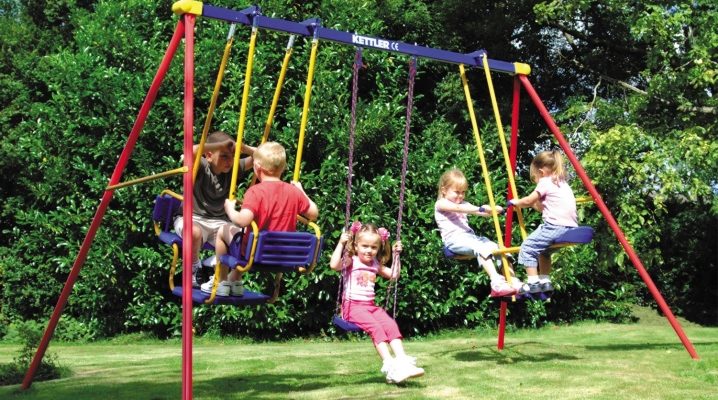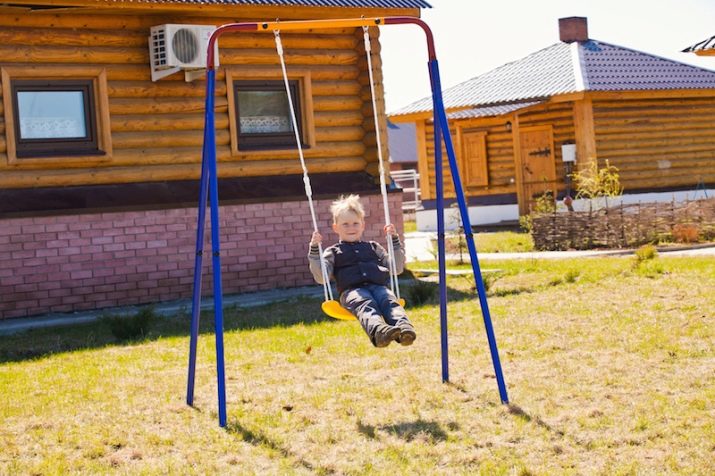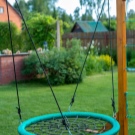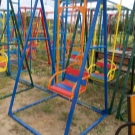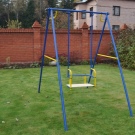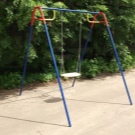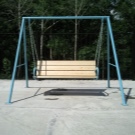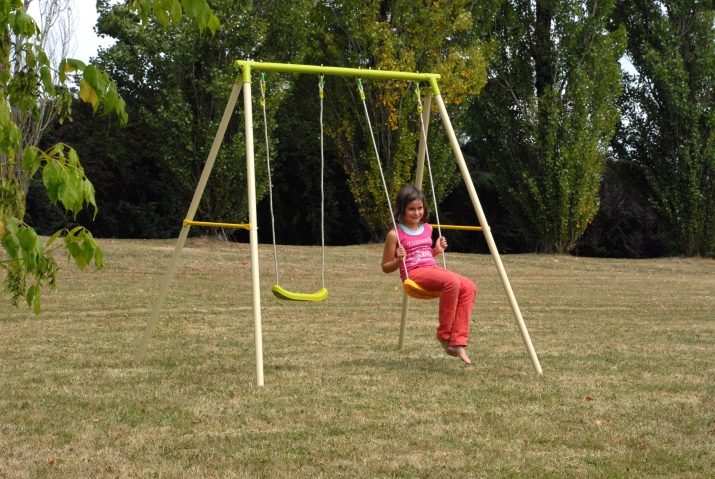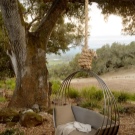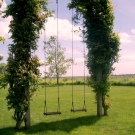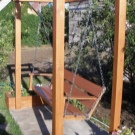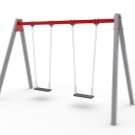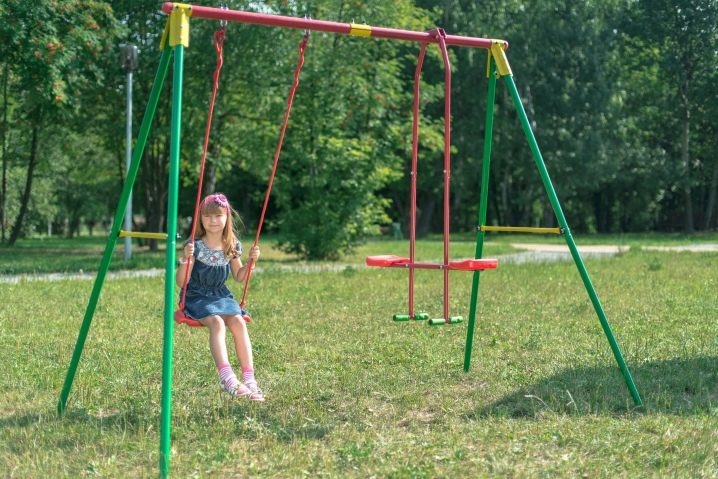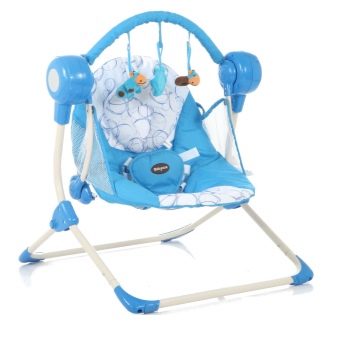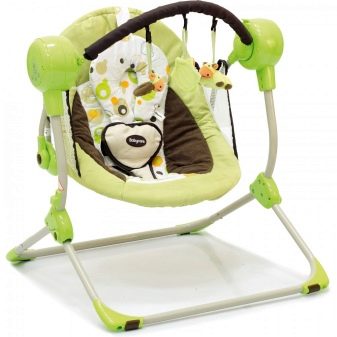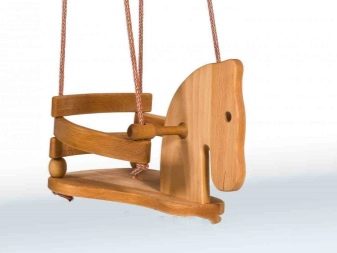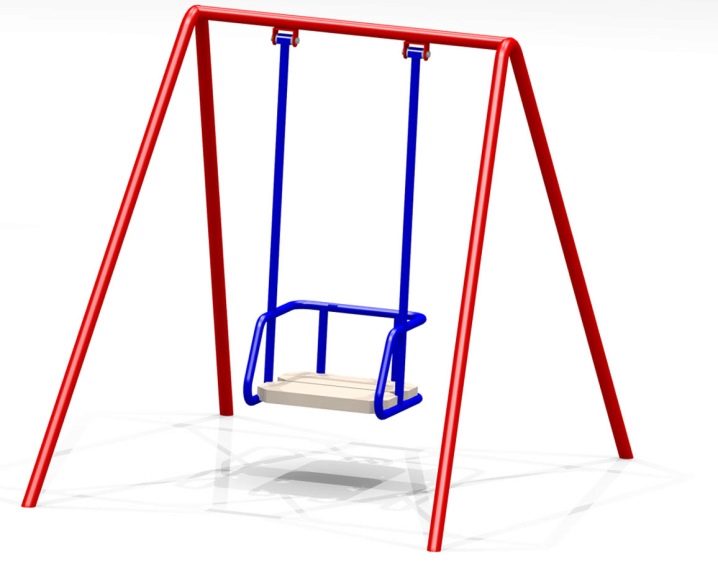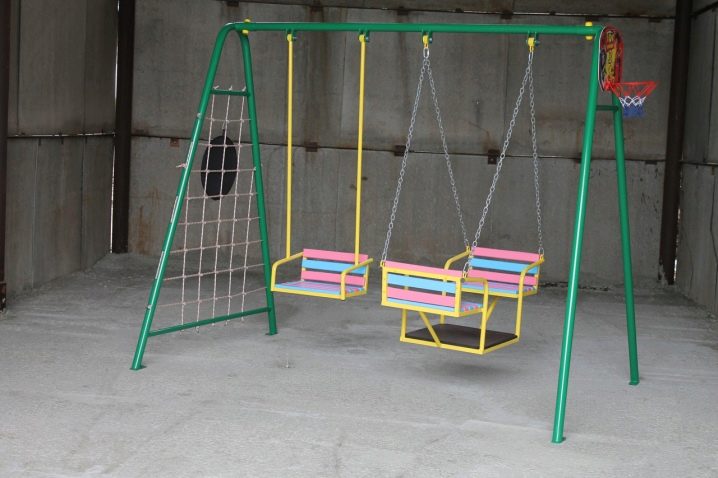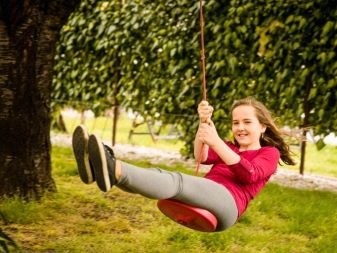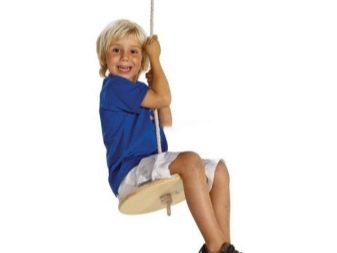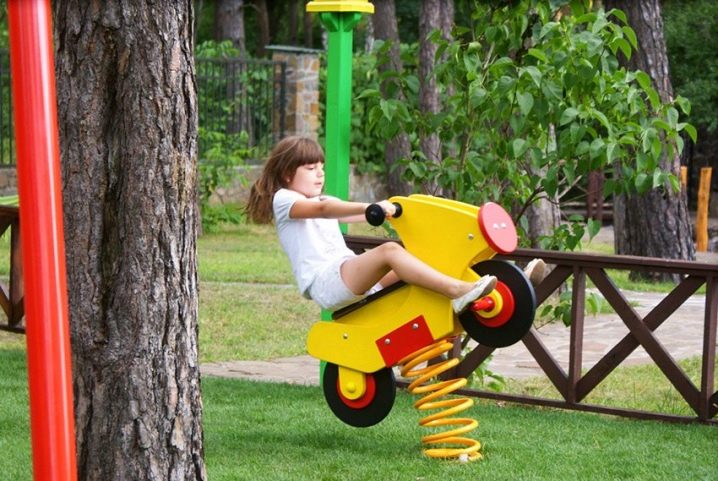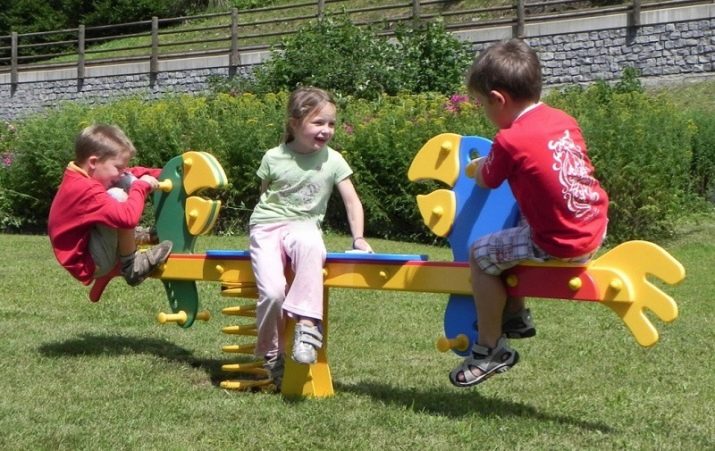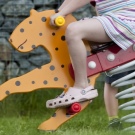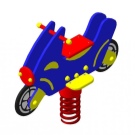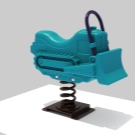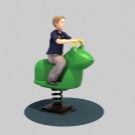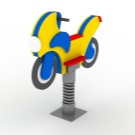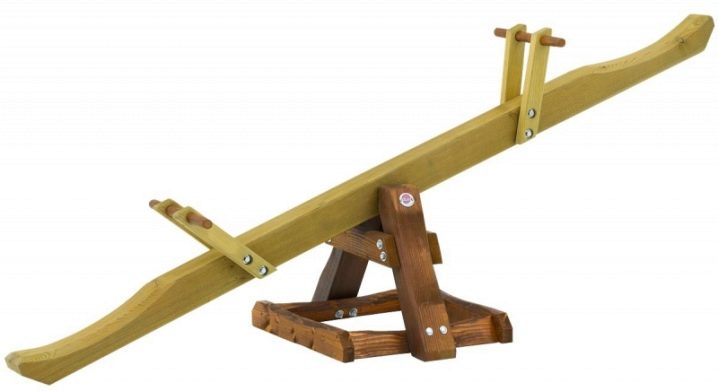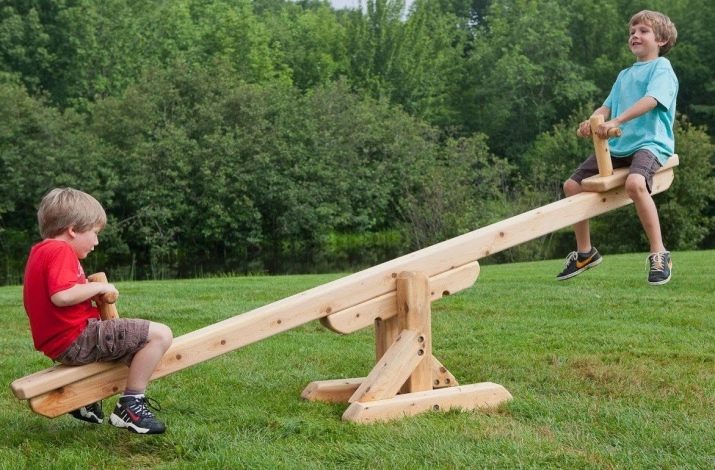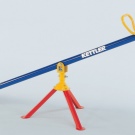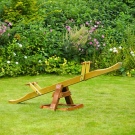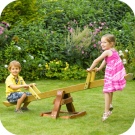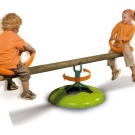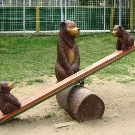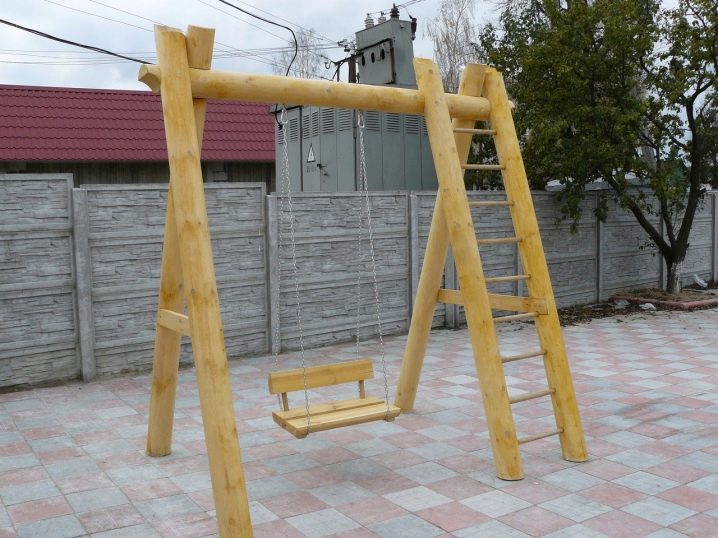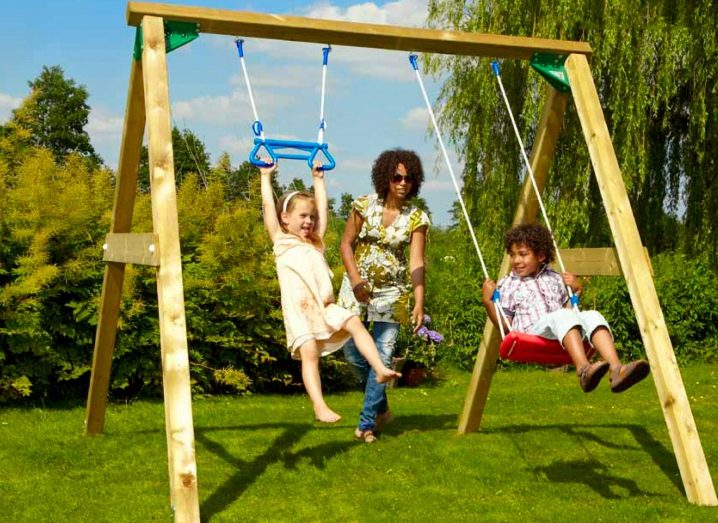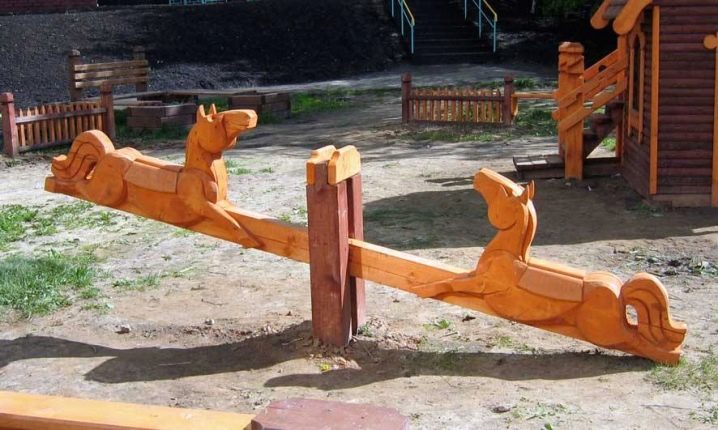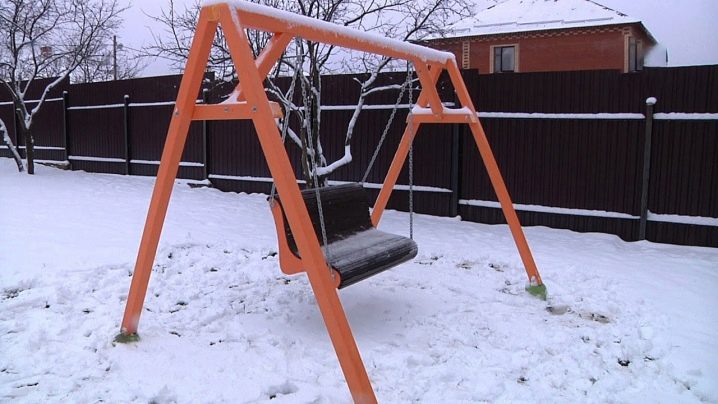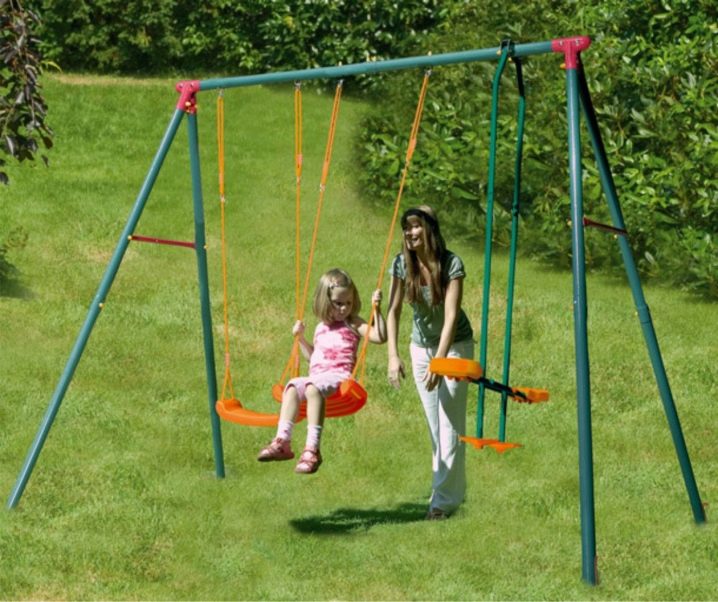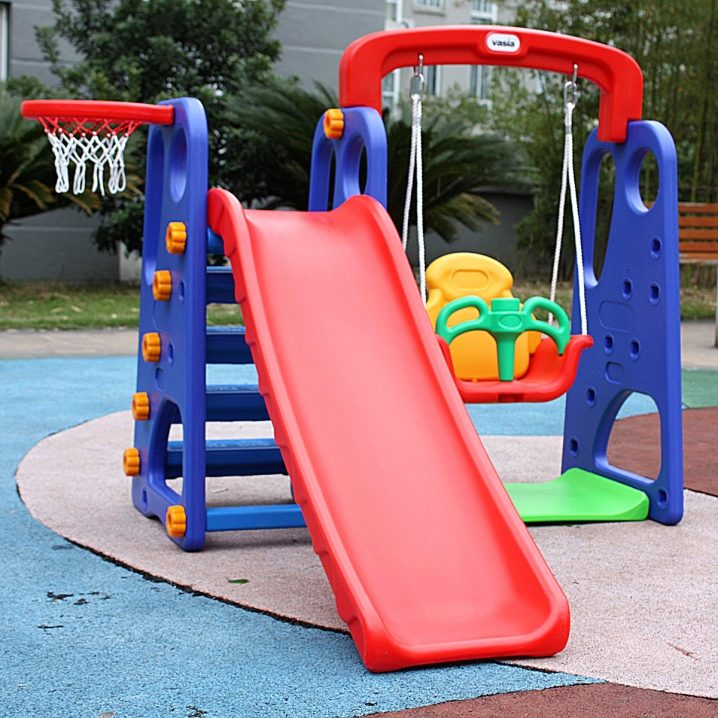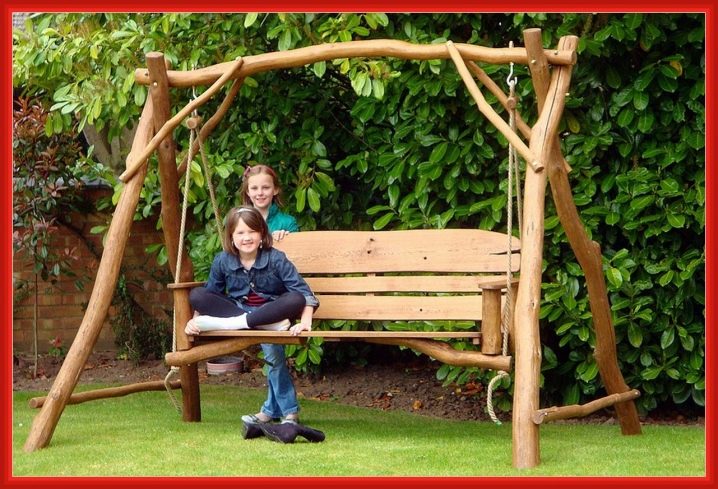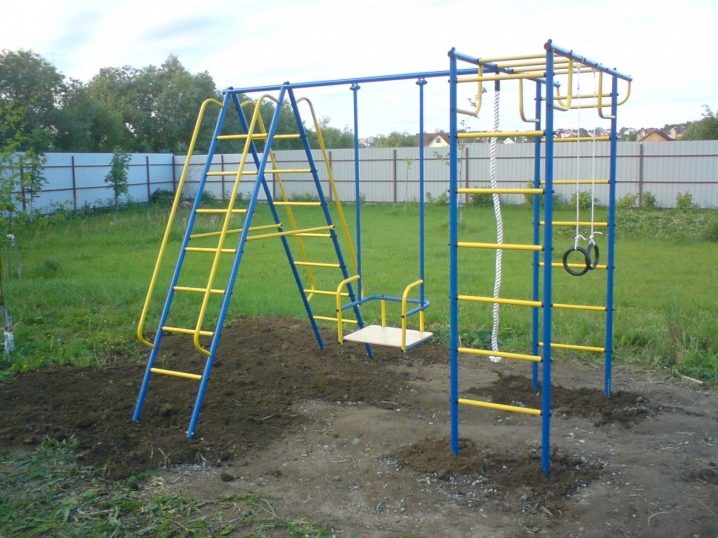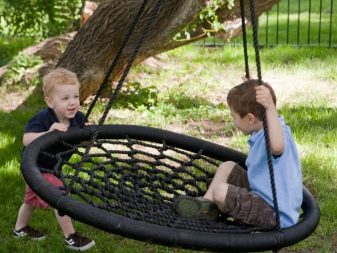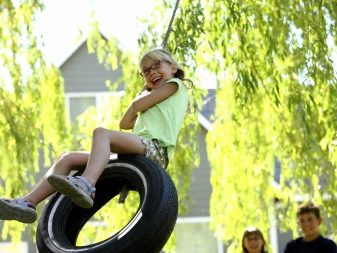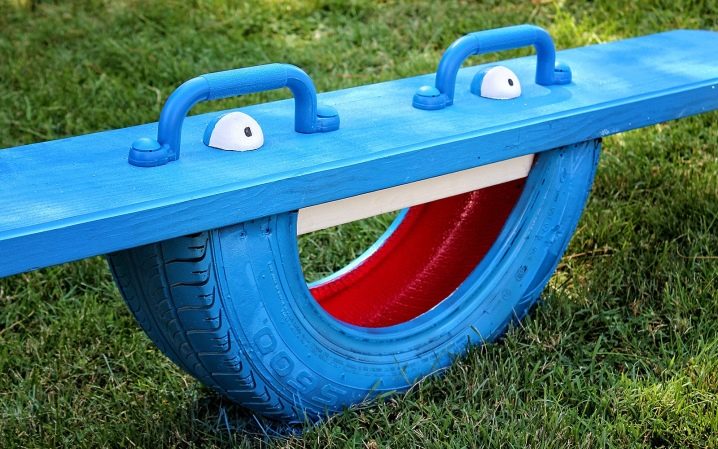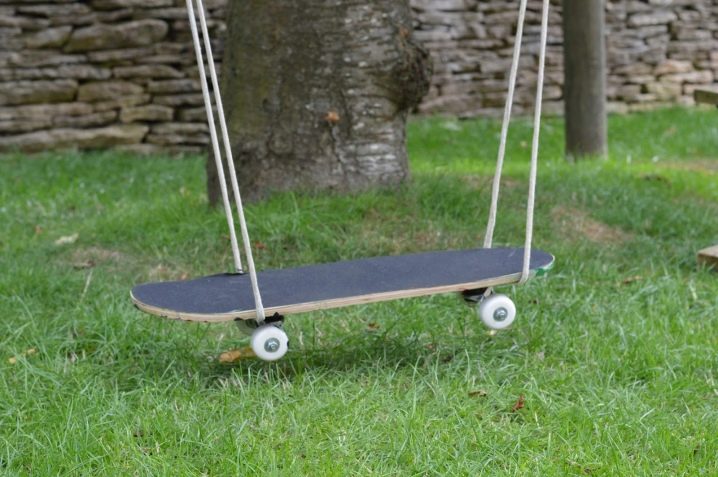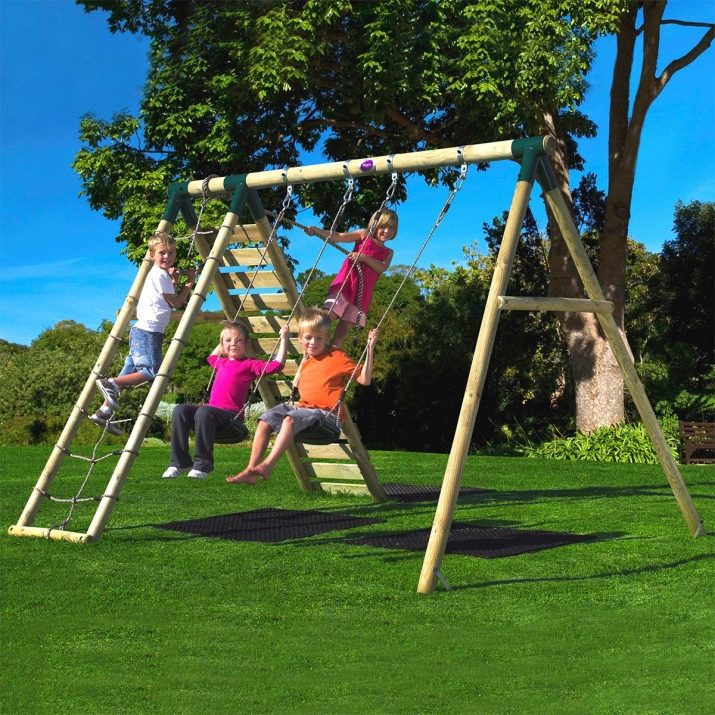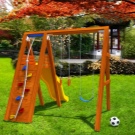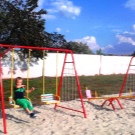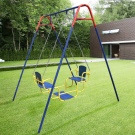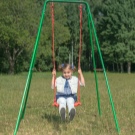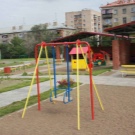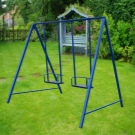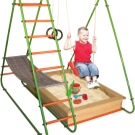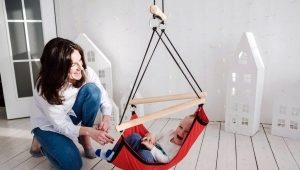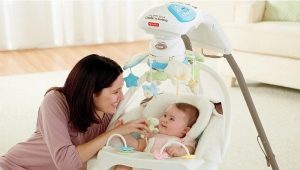Street swing
Children's swing is a great way to occupy children with maximum health benefits. Swings can be found everywhere: in the courtyards of high-rise buildings, in kindergartens, in private plots and cottages, in entertainment centers.
The benefit of the swing for a child’s body is difficult to overestimate:
- they strengthen the muscles of the arms and legs;
- contribute to the development of the part of the brain that is responsible not only for the coordinated work of the extremities, but also that which allows you to clearly move your arms and legs in the unsynchronized state;
- learn to keep a beat while swinging;
- learn to keep balance;
- strengthen the vestibular apparatus;
- develop communication skills, learn to work in a team (swing for two people);
- and of course, the child will always have something to do in the open air, while the parents are busy with household chores.
How to choose
One of the basic rules for choosing a swing for a child is his age. This takes into account not only the safety of the device for children, but also the development of psychomotor functions.
According to the age
It describes the swings, the use of which shows the maximum independence of the child, and the participation of an adult in the process is reduced to safety control and easy assistance.
- 3-12 months. For the youngest children from 6 months developed such a wonderful device, as the electric swing. This is a home version of the swing, but they are quite easily transformed into street ones, it is enough to take them with you to the dacha. Swings have a reliable frame and a seat with straps, which is driven by a motor and a control panel.
- 1-2 years. For children, from the year a suspended wooden or plastic devices will be an excellent option for outdoor, and even home swing. There are swings on a metal frame and ordinary swings on ropes, which are hung on a horizontal bar or a tree branch.
The advantage of hanging swing on the ropes is low cost, ease of storage and transportation. They can be placed anywhere, including close to their parents. All swings for children of this age must be equipped with a back and a limiter in front.
- 3 years. For children from three years old, you can use a swing swing without stopper and backrest.At this age, children are already sufficiently coordinating their movements to stay on the board without support. However, it is best to choose a swing with a metal hanging element (not on the ropes), because it is still difficult for the child to set in motion the swing on the ropes and without a backrest. Instead of pleasure, it will bring irritation and can provoke a tantrum.
- 5 years. At this age, you can use all the street swing options available on the market. Children are already well-developed coordination and are strong enough to independently set a large metal swing in motion.
- 7 years and older. Children of primary school age adore bungee and a swing swing-type swing, which requires well-coordinated work of all muscle groups. In order to stay on such a swing, one needs strength and dexterity, which in seven-year-old children is in abundance.
By type of construction
- Swings on a spring. They can be of any shape and size: in the form of a boat, a car, a motorcycle, a duckling, a dolphin, an airplane, a boat, and so on. The basis for these swings is a large powerful spring, which, compressing, unclenching and swaying in all directions, drives the seat.Swings are stationary, installation is performed in the ground, requires reliable fixation: pit, gravel, concrete.
The undoubted advantage is that they are available for a child from three years old and do not require intervention in the process of rocking an adult. The child himself regulates the amplitude of the spring by his actions, chooses to jump him on a swing or swing. Since the swings are not high, when a child falls from them, the child will not receive serious injuries.
Minus - swing can not be transferred.
- Swing pendulums. The easiest type of swing that can be made from planks and hemp. The basis of this type of swing is the lever principle. Children sit at different ends of the board and set it in motion, pushing off their feet from the ground.
Pros: the development of the muscles of the legs and arms, the development of a sense of balance (if children have different weight), it is easy to do on their own, low manufacturing cost.
Cons: can only be used for two children. They take enough space in length (the longer the lever, the more interesting it is to swing), without additional softening under the seat leads to hitting the ground, which affects the spine, without high handles there is a risk to roll down the board, it is inconvenient to swing to children of different weights.
- Suspended swing. The most common type of swing, which has many modifications. A swing type swing consists of a seat (plastic or wooden board, chair, tire, bag, etc.) and a suspension (rope, chain).
Pros: the ability to make any materials at hand. Suitable for children from 5 years and no further restrictions on age.
Cons: young children can swing only under the supervision of parents.
For two children
- Swing-pendulums (balance). Board with seats on the edges, which stands on a support and is driven by pushing children with their feet from the surface of the earth.
- Swing pair. Suspended swing with one seat, which are two children. The advantage is the development of skills in working in a pair: coordination of movements, working out leadership skills, the ability to find a way out of a difficult situation (I want to swing, but you need to find a way to do it together). The downside is the presence of only two suspensions, so each child holds the suspension with only one hand. A good way out of the situation will be a swing with a third hanger, which is built into the plane of the seat in the middle and allows both children to stay comfortably.
- Mirror swing. They belong to the stationary class of the frame type (they are attached to the ground, have a metal frame). Completely made of metal, have a rigid structure. The seats are located opposite each other, each child is alternately set in motion. Minus: take up a lot of space, heavy, require competent installation. Plus: develop muscle coordination, can be used by one person.
From different material
- Swing from plastic. This material is used to make swings for small children. It is lightweight, durable, reliable and painted in the most vivid colors. For swings, select environmentally friendly high-quality plastic light-fastness. Multicolored swings do not fade too much in the sun, even if they hang on the street during the whole summer. A seat (in the form of plastic plates assembled together) or a frame (in the form of a “diaper”, where a small child is placed) is made of this material.
- Swings from a tree. Almost any type of swing can be made of wood: frame, pendulum or suspended. The advantage of this type is the availability of materials.As a rule, in the country or in a country house there will always be a few boards to create the most simple design. The disadvantages include the susceptibility of the tree to destruction, such swings for the winter should be removed or, if stationary, covered with a film, protecting it from moisture.
- Metal swing. Represent a design, frame or frame which is made of metal. This is the most durable option, designed for greater "passability" of small users. They are usually installed in playgrounds. Such a swing is difficult to do yourself, but they are worth it. The great advantage is that they are able to withstand the weight of two adults, swinging in full force.
- Swing their scrap materials. They are made from everything that is on hand: old car tires, old skates, sticks, boards, etc. One of the most popular designs is a hanging swing tire: when a rope is tied to a tire and attached to a tree. The child wraps the tire with his feet, clings to the rope and swings in all directions, it turns out a kind of merry-go-round. Excellent balance and vestibular training.
You can also make a rocking chair out of tires by cutting it in half and attaching a seat with handles from above. For the smallest tires on the edges, limiters are installed.
Skate is an excellent option for sitting on a swing, only it is recommended to wrap it with something soft, because the emery board surface.
Safety requirements
- The frame of the swing should not be lower than 2 meters in height. For a small child, this is an opportunity to regulate height as he grows; for an older child, a higher swing amplitude;
- swing suspension for older children must be at least 2 meters. The longer the suspension, the greater the amplitude and the more interesting the swing;
- the seat must have a secure fit. It is permissible that it moves within the framework of the suspension, but in no case should it be possible for the suspension (ropes or chains) to come off the seat. Holders are used for fastening;
- The maximum load on the swing is three rider weights. Keep in mind that children love to swing all at once, so the minimum load will be at least 300 kg. Depending on the load, it is worth choosing a suspension (chains, cords, ropes);
- if you choose a chain for suspension, then “pack” them in a heat shrinkable cambric, this will prevent the appearance of rust;
- the place for the swing should be selected based on the height of the attachment point If the rods are mounted at a height of 3 meters, then around the swing should be at least 6 meters of free space. Keep in mind that children love to jump from a swing at their peak point, so there should be no trees, bushes and fences nearby.
